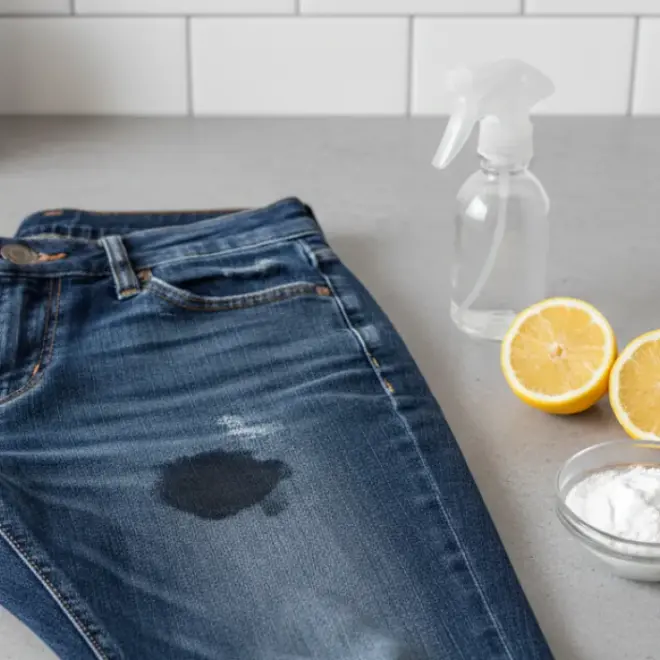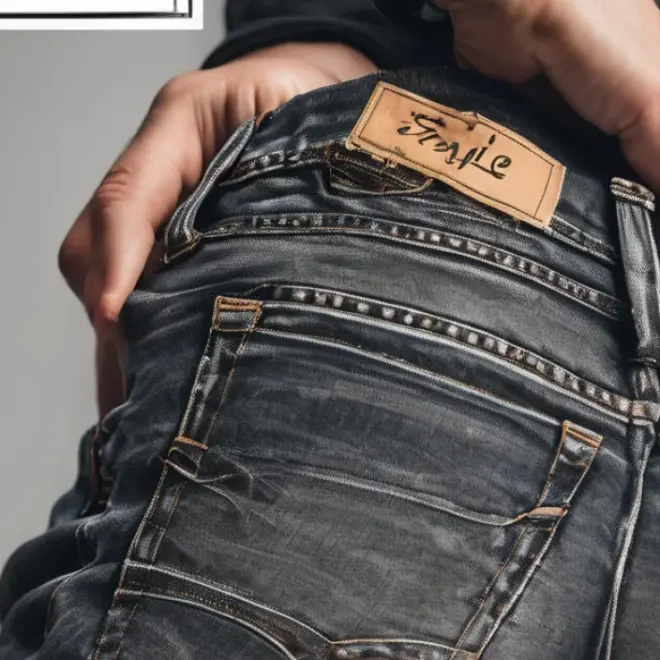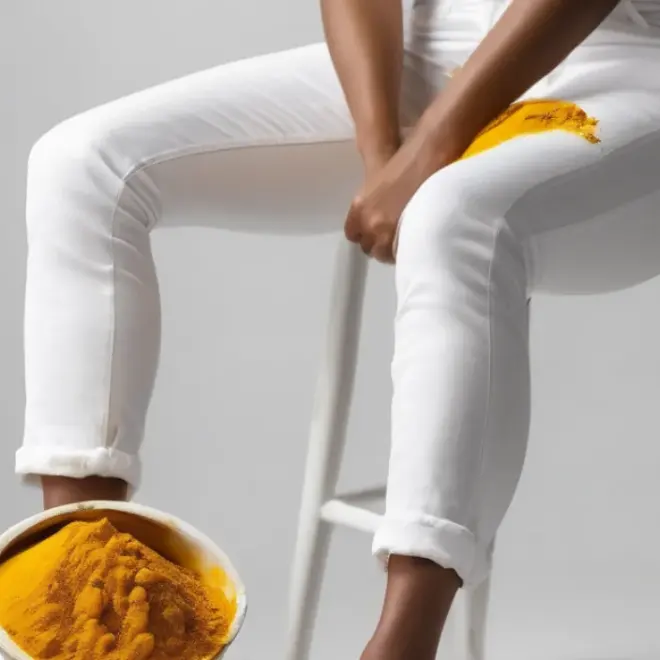For stubborn mustard stains on black jeans, act fast! Gently blot the fresh stain with cool water, then pre-treat with a liquid laundry detergent or a stain remover. Launder as usual in cold water. For older or set-in stains, a paste of baking soda and water or a diluted white vinegar solution can help lift the stain before washing. Always check for stain removal before drying.
Oh, the dreaded mustard stain! It happens. A quick hot dog, a messy sandwich, and suddenly your favorite pair of black jeans has a bright yellow visitor. Black jeans are a wardrobe staple, versatile and stylish, but when a condiment as vibrant as mustard lands on them, panic can set in. Don’t worry; tackling these stains is much simpler than you might think. With a few common household items and a bit of know-how, you can banish that yellow mark and get your black jeans looking as good as new. This guide will walk you through proven, stain-free methods, ensuring your jeans are saved from even the most stubborn of mustard mishaps. Let’s get those jeans back to their sleek, dark best.
Understanding Mustard Stains on Black Fabric
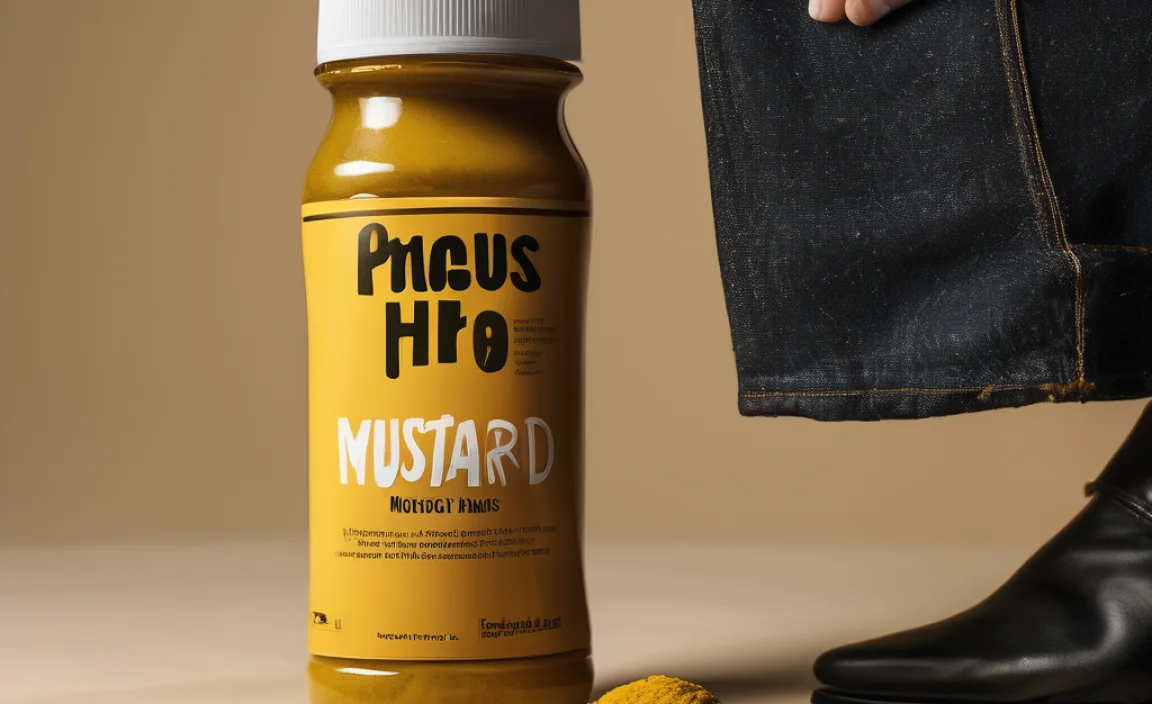
Mustard its a combination of turmeric, vinegar, mustard seeds, and often other spices, and while delicious on food, it can be a formidable foe when it comes to fabric. The primary culprits behind mustard stains are turmeric and the vinegar. Turmeric contains a powerful pigment called curcumin that readily binds to fabric fibers, especially natural ones like cotton, which makes up most denim. The acidity from the vinegar can also sometimes set the stain faster if not treated correctly. On black fabric, these stains can appear particularly stark and frustrating. The dark dye of the jeans can make the yellow pigment of the mustard stand out even more intensely, creating a visual contrast that’s hard to ignore.
The key to successful stain removal, particularly with tricky stains like mustard on black denim, lies in prompt action and the right treatment. Unlike some other stains that might benefit from warm water, mustard often responds best to cool or cold water initially. This helps to prevent the stain from setting further into the fabric’s fibers. Understanding the composition of the stain allows us to choose the most effective cleaning agents and methods, turning a potential clothing disaster into a minor blip. We’ll break down the process into simple, manageable steps that anyone can follow, regardless of their laundry experience.
The Essential Tools for Mustard Stain Removal
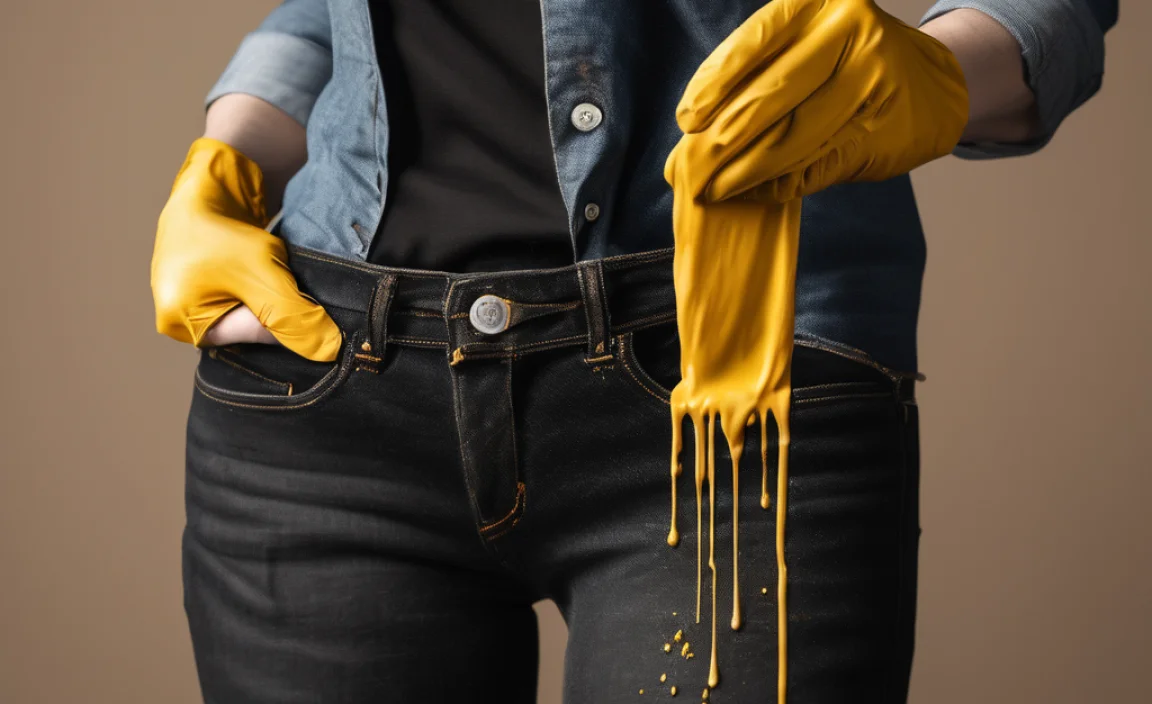
Before you dive into stain-fighting, gather your arsenal. Having the right tools on hand means you can tackle a mustard stain the moment it happens, significantly increasing your chances of complete removal. Most of these items are probably already in your home, making this process accessible and affordable.
- Cool Water: Your first line of defense. Always have access to clean, cool water.
- Clean Cloths or Paper Towels: For blotting and dabbing. White cloths are ideal so you don’t transfer any dye onto the jeans.
- Liquid Laundry Detergent: A good quality liquid detergent works wonders as a pre-treatment.
- Stain Remover Spray or Stick: Commercial stain removers are formulated to break down common stains.
- Baking Soda: An excellent natural abrasive and deodorizer that can help lift stains.
- White Vinegar: The acidity in white vinegar can help break down the stain pigments. Ensure it’s white vinegar to avoid further discoloration.
- Old Toothbrush or Soft Brush: For gently working in cleaning solutions.
- Washing Machine: For the final cleaning cycle.
- Gloves: Optional, but recommended if you have sensitive skin or are using stronger cleaning agents.
Step-by-Step Guide: How to Remove Mustard from Black Jeans
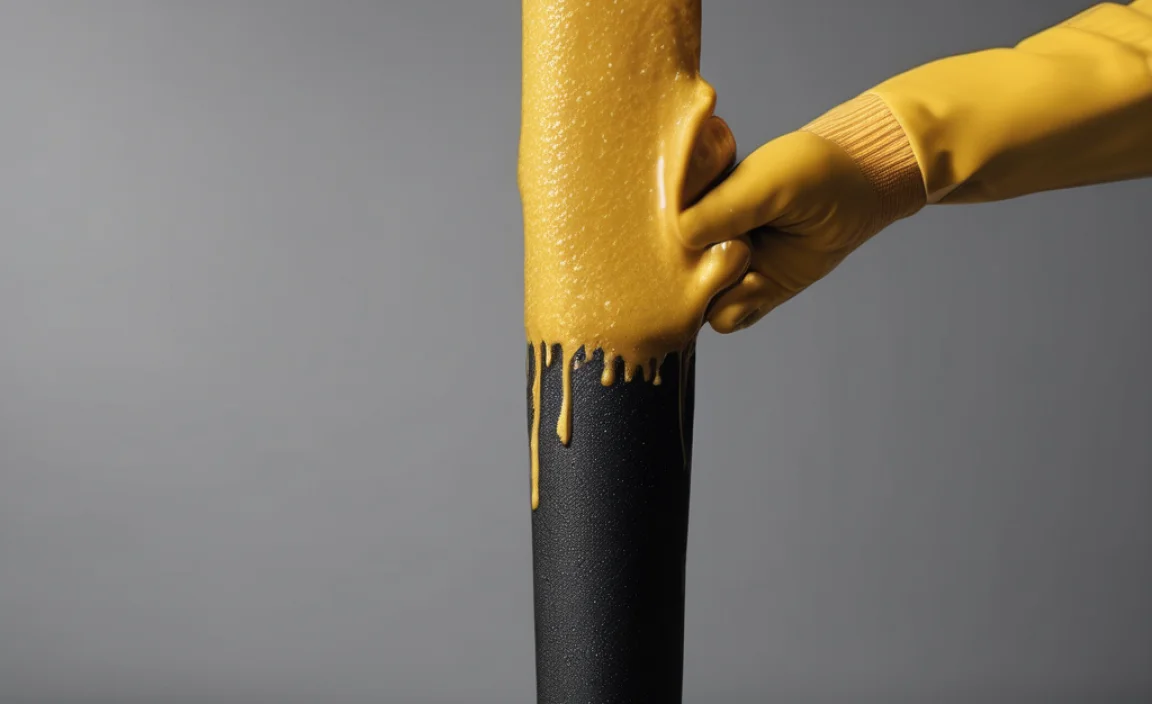
Let’s get down to business. Follow these steps carefully, and you’ll be well on your way to stain-free black jeans.
Step 1: Immediate Action – Blot, Don’t Rub!
The very first thing you should do when mustard hits your black jeans is to grab a clean cloth or paper towel and gently blot the excess mustard. It’s crucial to blot – not rub. Rubbing will push the stain deeper into the fabric fibers and can spread it, making it much harder to remove. Think of it like trying to soak up a spill without smearing it further.
Step 2: Rinse with Cool Water
Once you’ve blotted away as much of the surface stain as possible, turn the jeans inside out and flush the stained area with cool running water from the back. This helps to push the stain out of the fibers, rather than deeper in. Continue flushing for a minute or two. Avoid hot water at this stage, as heat can set the stain, making it permanent.
Step 3: Pre-Treat the Stain
This is where you bring out your cleaning power. You have a couple of excellent options:
Option A: Liquid Laundry Detergent
Apply a small amount of liquid laundry detergent directly onto the stained area. Gently work it into the fabric with your fingers or a soft brush. Let it sit for about 5-10 minutes to allow the detergent enzymes to start breaking down the stain. Ensure the detergent is a color-safe variety.
Option B: Commercial Stain Remover
If you have a reliable stain remover spray or stick, apply it generously to the mustard stain according to the product’s instructions. Most stain removers are designed to be left on for a specific period, usually 5-15 minutes. Always test a small, inconspicuous area of the jeans first, especially if it’s a new product, to ensure it doesn’t affect the black dye.
Step 4: Address Stubborn or Set-In Stains
If the stain is older, has already dried, or if Steps 1-3 didn’t fully lift it, you might need a slightly stronger approach. These methods are gentle but effective for tougher mustard stains.
Method 1: Baking Soda Paste
Mix a tablespoon or two of baking soda with just enough cool water to form a thick paste. Apply this paste directly to the stain, covering it completely. Let it sit for at least 30 minutes, or even a few hours for very stubborn stains. The baking soda acts as a mild abrasive and absorbent to lift the stain. You can gently work the paste into the stain with an old toothbrush after about 15 minutes.
Method 2: White Vinegar Solution
Combine equal parts cool water and white vinegar in a small bowl. Dampen a clean cloth with this solution and blot the stain thoroughly. You can also pour a small amount of the solution directly onto the stain. Let it sit for about 10-15 minutes. White vinegar is acidic and can help break down the turmeric pigments. After the soak, you can gently scrub the area with a soft brush.
After using either the baking soda paste or the vinegar solution, rinse the area again with cool water and inspect the stain. If it looks like it’s significantly faded or gone, proceed to the next step. If not, you can repeat the pre-treatment or try the alternative method.
Step 5: Launder as Usual (with Caution)
Once you feel the stain has been adequately pre-treated, it’s time to wash your black jeans. Wash them in cold water on a normal cycle. Use your regular laundry detergent. It’s crucial to use cold water to prevent any lingering stain from setting in the heat of the wash or dryer.
Tip: If you’re washing a load of dark colors, add a color catcher sheet to your washing machine. This can help prevent any residual dye from bleeding onto lighter items in the same load and helps keep your black jeans looking their best.
Step 6: Inspect Before Drying
This is perhaps the most critical step after washing. Before you put your black jeans in the dryer, carefully inspect the stained area in good light. If you can still see any trace of the mustard stain, DO NOT put them in the dryer. The heat from the dryer will permanently set the stain, making it nearly impossible to remove. If the stain persists, repeat the pre-treatment steps (Step 3 or 4) and rewash the jeans. Patience is key here.
Step 7: Air Dry or Dry Carefully
Once you are absolutely certain the stain is gone, you can proceed to dry your jeans. Air drying is always the gentlest option and best for preserving the color of black denim. If you choose to machine dry, use a low heat setting. Check the jeans again once they are dry to ensure the stain is truly gone.
Pro Tips for Black Jeans and Mustard Stains
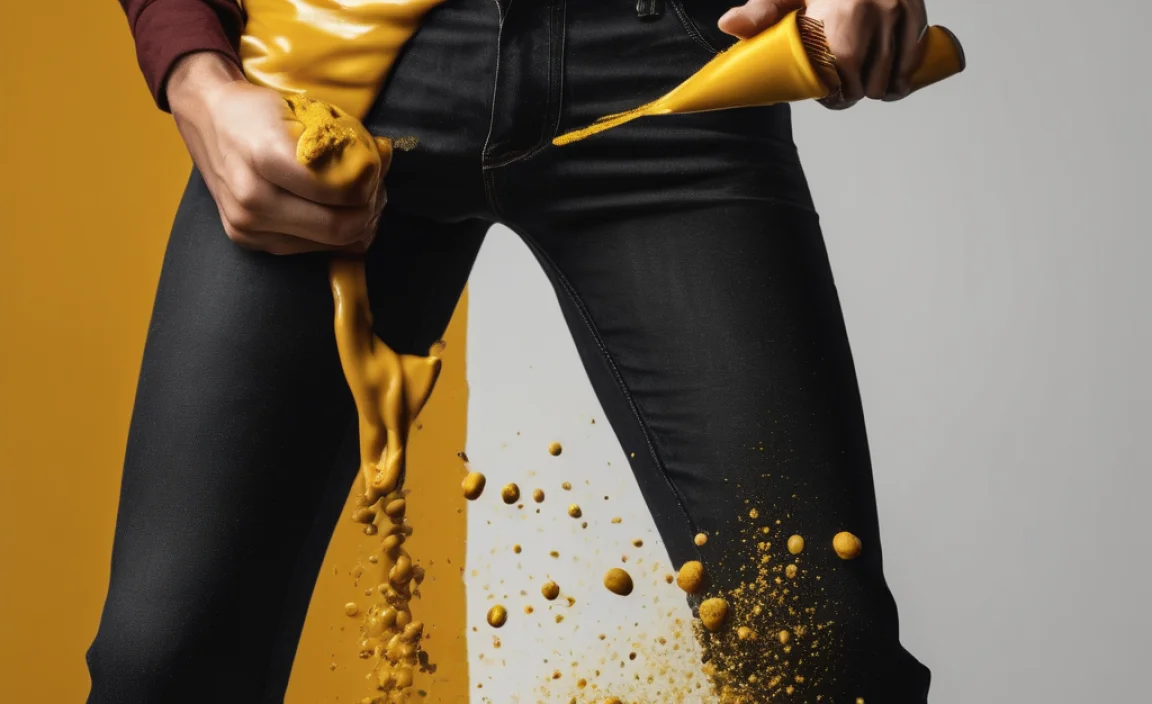
Beyond the basic steps, here are some insider tips to make stain removal more effective and keep your black jeans looking sharp:
- Act Fast: The sooner you treat a mustard stain, the easier it is to remove. Fresh stains are far more cooperative than old, dried-on ones.
- Test First: Always test any stain remover or cleaning solution on an inconspicuous area of the jeans (like an inside seam) before applying it to the prominent stain. This is especially important for colored fabrics like black denim to avoid bleaching or color loss.
- Gentle Scrubbing: When using a paste or solution, a soft-bristled toothbrush is your best friend. It allows for gentle agitation without damaging the fabric fibers.
- Avoid Bleach: Never use chlorine bleach on black jeans. It will cause permanent discoloration and likely leave a lighter, uneven patch where the stain was.
- Sunlight for Fading: If, by some chance, a faint yellowing remains and the stain is completely gone, a small amount of direct sunlight can sometimes help fade residual yellowing on white or light-colored fabrics. However, for black jeans, this can be risky as prolonged sun exposure can fade the black dye itself. It’s generally best to avoid this for black denim.
- Professional Cleaning: For very old, deeply set stains, or if you’re hesitant to treat them yourself, consider consulting a professional dry cleaner. They have specialized solvents and techniques that might be able to tackle advanced stains
Understanding Fabric Care and Stain Resistance

The materials and dyes used in your black jeans play a role in how easily stains can be removed. Most black jeans are made from cotton denim, which is quite absorbent. The dyes used to create the deep black color can sometimes be more prone to fading or reacting with certain cleaning agents. Understanding these aspects can help you be more proactive in stain prevention and treatment.
For instance, synthetic fibers mixed with cotton can sometimes offer slightly more stain resistance, making them a bit easier to clean. However, the most effective stain resistance comes from treating stains immediately. Brands that use high-quality dyes and finishing processes for their black denim may offer better color fastness, meaning the color is less likely to bleed or fade during cleaning. Resources like the Federal Trade Commission’s guide on clothing care labeling can offer general insights into understanding fabric care instructions, which are vital for maintaining your garments.
Comparison of Stain Removal Methods
Different methods have their strengths and weaknesses when it comes to tackling mustard stains on black jeans. Here’s a quick comparison:
| Method | Pros | Cons | Best For |
|---|---|---|---|
| Cool Water & Blotting | Immediate, simple, prevents setting. | Only removes surface stain; not effective on its own for deep stains. | Fresh spills, immediate response. |
| Liquid Laundry Detergent | Readily available, effective degreaser, breaks down many stain types. | May require multiple applications for tough stains. | Fresh to moderately set stains. |
| Commercial Stain Remover | Specifically formulated, often powerful and fast-acting. | Can be harsh; requires testing, may leave residue if not rinsed properly. | Stubborn, dried-in stains. |
| Baking Soda Paste | Natural, abrasive for lifting, odor neutralizer, safe. | Can be messy, may require scrubbing. | Moderately set or stubborn stains. |
| White Vinegar Solution | Acidic to break down stain, natural, readily available. | Vinegar smell dissipates, but needs thorough rinsing; can be risky on delicate dyes if used undiluted or for too long. | Set-in stains, good alternative if detergent fails. |
Frequently Asked Questions About Mustard Stain Removal
Q1: Can I use hot water to remove a mustard stain from black jeans?
No, it’s best to avoid hot water. Heat can set the stain deeper into the fabric fibers, making it much harder to remove. Always start with cool or cold water.
Q2: How long should I leave a pre-treatment on the stain?
For liquid detergent or commercial stain removers, typically 5-15 minutes is sufficient. For baking soda paste, you can leave it on for 30 minutes to a few hours for tougher stains. Always follow product instructions for commercial removers.
Q3: My jeans still have a faint yellow mark after washing. What should I do?
Do not put them in the dryer! Repeat the pre-treatment steps with your chosen method (detergent, stain remover, baking soda, or vinegar) and wash them again in cold water. You may need to try a different method for stubborn stains.
Q4: Will these methods fade my black jeans?
These methods are designed to be color-safe when used as directed. However, it’s always wise to test any cleaning solution on an inconspicuous area of the jeans first. Avoid chlorine bleach at all costs, as it will cause discoloration.
Q5: What if the stain is old and dried on?
For old, dried-on stains, you’ll likely need to pre-treat them for a longer period. Soaking the stained area in a solution of cool water and either white vinegar or a mild detergent for an hour or more before gently scrubbing and washing can be effective. You might also consider using a dedicated enzyme-based stain remover formulated for tough stains.
Q6: Is it safe to use dish soap on my jeans?
Mild dish soap, especially those formulated for grease-cutting, can sometimes be effective on mustard stains. Apply a small amount directly to the stain, gently work it in, let it sit for a few minutes, and then rinse thoroughly before proceeding with the wash. Use with caution and test it first.
Conclusion: Your Jeans, Stain-Free and Stylish Again
Dealing with a mustard stain on your favorite black jeans doesn’t have to spell disaster. By understanding how mustard stains work and employing these straightforward, proven methods, you can effectively remove even the most stubborn marks. Remember, the key is to act quickly, avoid heat, and be persistent. From immediate blotting and cool water rinsing to targeted pre-treatment with everyday household items like laundry detergent, baking soda, and white vinegar, you have a robust toolkit at your disposal. Always inspect your jeans before drying to ensure the stain is completely gone, and if not, simply repeat the process. With a little care and attention, your black jeans will be back to their pristine, stylish state, ready for whatever your day throws at them. Happy cleaning!






